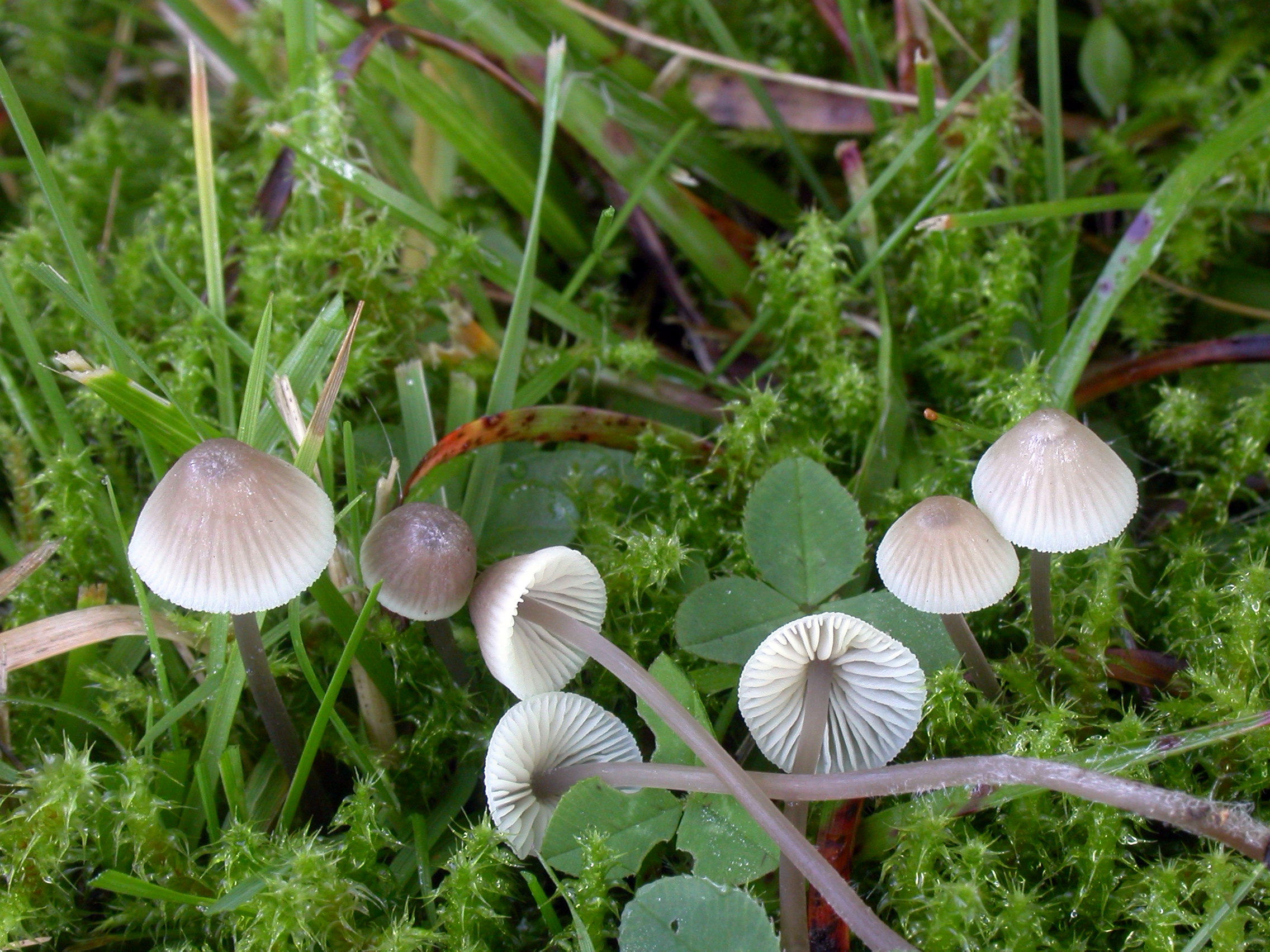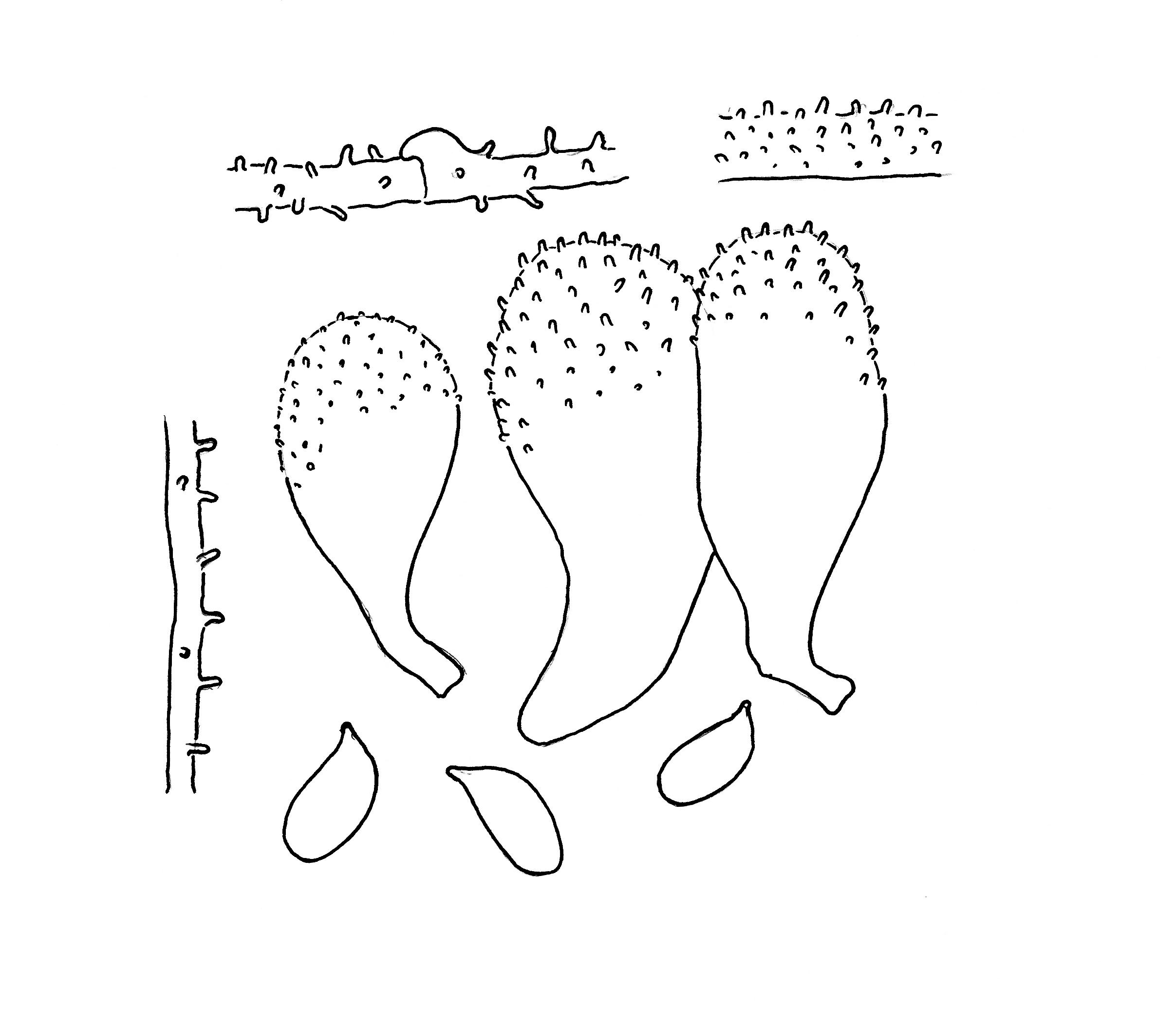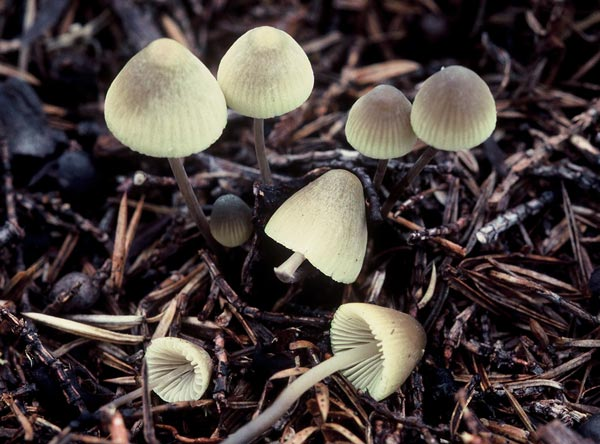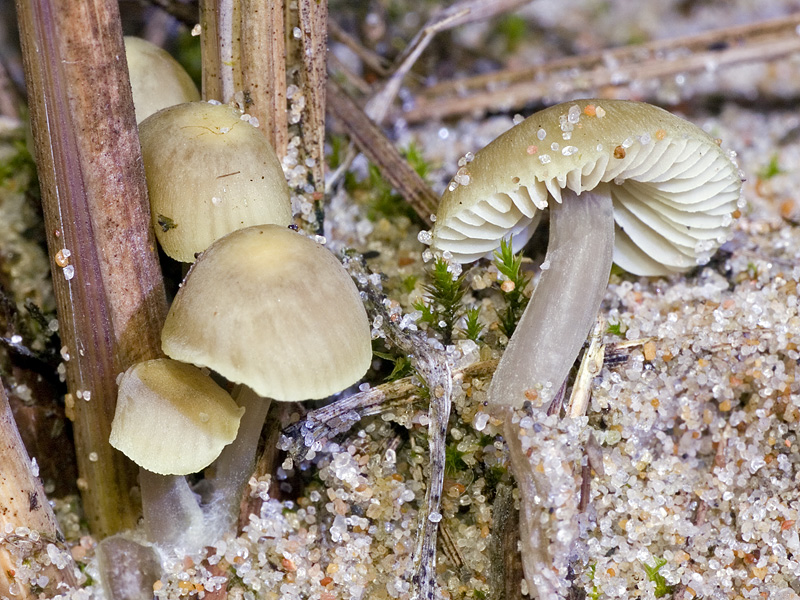Mycena flavescens
Mycena flavescens
Description
Hyphae of the pileipellis, hypha of the cortical layer of the stem, cheilocystidia and spores.
Cap 5-15 mm across, conical to broadly conical or campanulate to convex, and often umbonate, glabrous, hygrophanous, translucent-striate, sulcate, at first often dark black-brown at the centre with pale brown to beige or almost whitish margin, generally with a marked margin between the darker and the pallid parts of the cap, then fairly dark brown at the centre, paler to beige towards the margin, fading to pale grey or pale greyish brown with pallid to whitish margin. Gills 17-26 reaching the stem, adnexed, white to cream or pale grey, often with a pale yellowish shine, the edge concolorous or very weakly coloured pale yellow, best seen in young specimens and near the margin of the cap. Stem 15-60 x 0.5-1 mm, cylindrical, equal, fairly firm, glabrous except for the pruinose apex, greyish to brownish, often olivaceous brown at the apex and darker brown below; the base covered with coarse, white fibrils. Odour usually strong, disagreeable, mouldy, raphanoid or reminiscent of raw potato. Basidia 21-28 x 8-9 µm, clavate, 4-spored. Spores 7.5-10 x 4-5 µm, Q = 1.5-2.2, Qav ˜ 1.9, pip-shaped to somewhat elongated, amyloid. Cheilocystidia 19-37 x 12-27µm, sessile to stipitate, ellipsoid to clavate, obpyriform or subglobose, densely covered with warts or evenly spaced, cylindrical excrescences 0.5-3 x 0.5-1 µm. Pleurocystidia similar. Lamellar trama dextrinoid. Hyphae of the pileipellis 3-25 µm wide, densely covered with warts or short excrescences. Hyphae of the cortical layer of the stem 2.5-4.5 µm wide, covered with scattered, short, cylindrical excrescences. Clamps present in all tissues.
Ecology and distribution
Occurring solitary or in fascicles in mossy lawns, on moss-covered tree trunks, on leaf litter under deciduous trees, and on fallen needles under conifers, particularly Picea. Autumn. Rather rare in Norway.



